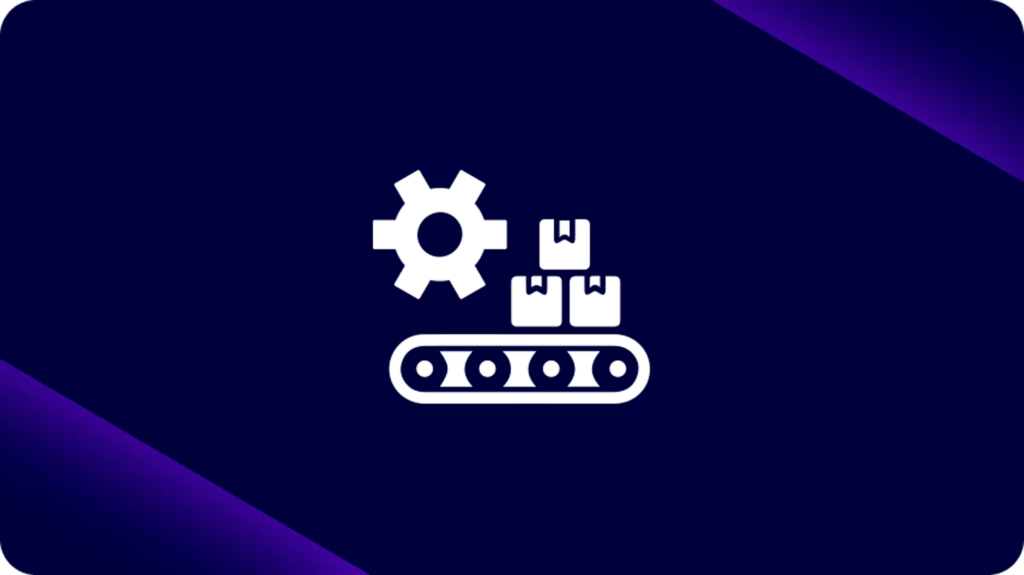September 15, 2022
Fundador e presidente da empresa de análise de transformação digital Intellyx, Jason Bloomberg examina três mitos da integração moderna neste recurso de setembro de 2021.
Por que a integração deve ser Low-Code, Cloud-Native e Full Lifecycle
Jason Bloomberg, presidente, Intellyx, setembro de 2021
O mundo da TI corporativa se transformou completamente em relação a década passada. Hoje, esperamos e exigimos a capacidade de mudar em escala.
A infraestrutura de TI deve ser inerentemente dinâmica, sem qualquer limitação no escopo ou escala de qualquer aplicativo específico. A computação nativa em nuvem surgiu para atender a essas necessidades.

As empresas, no entanto, devem lidar continuamente com ativos legados existentes no contexto desse cenário de TI moderno. A computação nativa em nuvem eleva o nível de integração empresarial, pois as organizações não podem mais desacelerar ao conectar ativos antigos a novos.
Para atender a essa necessidade, surgiu uma nova classe de tecnologia de integração que é low-code, cloudnative e que suporta mudanças em todo o ciclo de vida do software.
>> Agende uma demonstração personalizada com nossa equipe de especialistas e veja como o iPaaS da Digibee trará eficiência ao seu negócio.
O Cenário de TI Moderno: Mudança em Escala
Comentando sobre a onipresença da mudança, foi o antigo filósofo grego Heráclito quem disse que era impossível entrar no mesmo rio duas vezes. O sujeito pode ter sido presciente, considerando o estado da TI corporativa hoje.
A mudança não é apenas constante no mundo da tecnologia, mas afeta todos os aspectos da TI, desde as expectativas dos clientes até a infraestrutura subjacente. Em muitas situações, a mudança é até acelerada.
A capacidade de apoiar a mudança, no entanto, não é suficiente. As organizações de TI devem ser capazes de suportar mudanças em escala. Esse requisito generalizado deu origem à computação cloud-native: uma mudança de paradigma em como as organizações constroem e aproveitam a tecnologia para dar suporte a esse tipo de mudança.
A capacidade de apoiar a mudança, no entanto, não é suficiente. As organizações de TI devem ser capazes de suportar mudanças em escala. Esse requisito generalizado deu origem à computação cloud-native: uma mudança de paradigma em como as organizações constroem e aproveitam a tecnologia para dar suporte a esse tipo de mudança.
A computação nativa na nuvem, no entanto, pode ser complicada e difícil – e não valeria a pena o esforço se os clientes não estivessem exigindo recursos centrados em tecnologia melhores e mais dinâmicos das empresas com as quais fazem negócios.
O contexto de transformação digital para Cloud-Native
Colocar os clientes no centro do esforço de TI é o cerne da transformação digital. Essa transformação é impulsionada pelo cliente e capacitada pela tecnologia – e está se tornando cada vez mais urgente agora que a pandemia da Covid está chegando ao fim.
Impedir esse mandato de alavancar a computação nativa na nuvem para entregar a transformação digital é todo o espectro da dívida técnica, principalmente dentro da TI. Décadas de decisões convenientes e gerações de tecnologias agora legadas apresentam uma barreira formidável para a mudança em escala que as empresas de hoje almejam.
Romper a tecnologia antiga raramente ou nunca é uma resposta. Para avançar diante da dívida técnica, os líderes de TI devem aplicar uma combinação deliberada de modernização, migração e integração – atualização, movimentação e conexão de ativos existentes a novos, respectivamente.
A integração, em particular, requer uma nova maneira de pensar para dar suporte ao mantra nativo na nuvem ‘mudança em escala’. Devemos acabar com os velhos mitos da integração para avançar com a computação nativa na nuvem e, por extensão, com nossas prioridades de transformação digital.
Mito de integração nº 1: Low-code é adequado apenas para cenários de integração simples
As tecnologias de baixo código já existem há décadas, mas a geração moderna de low-code ferramentas e plataformas concentra-se na redução da carga sobre os desenvolvedores profissionais, pois promove uma maior colaboração com as partes interessadas e, ao mesmo tempo, acelera o desenvolvimento de software.
Low-code, no entanto, é mais do que criar aplicativos independentes. Dentro das organizações, a criação de software nunca está sozinha. Sempre há um banco de dados para consultar, uma API para conectar ou um conector para integrar.
Alguns low-code ferramentas lutam para lidar com essa realidade. Muitos low-code As ferramentas podem ajudar os criadores de aplicativos a lidar com muitos desses cenários básicos de integração, mas deixam os mais complexos para a codificação manual.
Esta limitação, no entanto, está rapidamente a tornar-se obsoleta, à medida que os modernos low-code ferramentas ajudam os criadores de aplicativos com cenários de integração cada vez mais sofisticados, sem exigir a escrita de uma única linha de código.
Mito da integração nº 2: a computação nativa na nuvem é sobre aplicativos novos, mas a integração aborda os desafios do brownfield
A necessidade de mudança em escala deu origem a microsserviços e contêineres, que por sua vez colocaram o orquestrador de contêineres Kubernetes na vanguarda do movimento nativo na nuvem.
Muitos dos primeiros usuários do Kubernetes aproveitam sua capacidade de oferecer suporte a mudanças em escala para criar novos microsserviços que se integram em aplicativos novos.
A computação nativa na nuvem, no entanto, é mais ampla que o Kubernetes e suporta muito mais do que aplicativos novos. Na verdade, o cenário empresarial típico é uma mistura híbrida de ativos ‘brownfield’ existentes, bem como os recursos mais novos que estamos chamando de ‘greenfield’.
O panorama geral da computação nativa na nuvem é a presença de uma abstração do plano de controle que dá suporte e reforça o comportamento baseado em políticas até mesmo nos ambientes híbridos de TI mais complexos.
O greenfield é um componente desse quadro maior, com certeza, mas conectar o novo ao antigo – verde ao marrom – é o cenário mais comum e, de fato, mais valioso.
A integração tradicional e codificada, no entanto, é muito inflexível para oferecer suporte a essa visão de TI híbrida para computação nativa na nuvem. Em vez disso, a própria integração deve ser baseada em políticas e inerentemente flexível para oferecer suporte aos aplicativos nativos na nuvem de hoje e do futuro.
Mito da integração nº 3: a integração é uma atividade pré-implantação
Para obter os benefícios da mudança em escala da computação nativa na nuvem, devemos nos libertar dos grilhões das integrações tradicionais codificadas.
Mesmo com a evolução das tecnologias de integração, das ferramentas de integração de aplicativos corporativos dos anos 1990 aos barramentos de serviços corporativos (ESBs) dos anos 2000 e às abordagens RESTful dos anos 2010, os profissionais de TI sempre trataram a integração como algo que eles fazem antes da implantação. Em outras palavras, conecte as coisas antes de executá-las.
O objetivo de poder alterar integrações dinamicamente em tempo de execução era um sonho dos dias de ESBs e Web Services. As primeiras implementações de Web Services ofereceram suporte à descoberta e integração automáticas, onde os endpoints podiam negociar uns com os outros automaticamente em tempo de execução.
Na prática, porém, esse tipo de integração dinâmica provou ser impraticável – e os Web Services tornaram-se mais um ponto de extremidade para integrações hard-coding.
Até hoje, o uso de casos para integrações totalmente automatizadas que podem mudar dinamicamente em tempo de execução é limitado. A simples variedade de diferentes tipos de mudanças é simplesmente demais para que as integrações automatizadas possam lidar com isto.
Para equilibrar essas prioridades de mudanças de integrações em escala, devemos considerar a integração como uma atividade de ciclo de vida completa.
Em outras palavras, devemos nos libertar da crença centrada em cascata de que as fases de pré-implantação e pós-implantação do software são de alguma forma imutáveis. Em vez disso, devemos pegar uma página do manual ágil e abordar o ciclo de vida do software de maneira iterativa.
Devemos considerar a integração como uma atividade de ciclo de vida completo. Em outras palavras, devemos nos libertar da crença centrada em cascata de que as fases de pré-implantação e pós-implantação do software são de alguma forma imutáveis.
A maneira de pensar nativa na nuvem leva essa abordagem iterativa ao extremo com práticas de desenvolvimento modernas, como DevOps, CI/CD e GitOps.
Esperamos mudanças constantes sem desacelerar a implantação de software novo e atualizado, diz a teoria, então permitimos e planejamos mudanças no ambiente de produção.
Essa abordagem moderna e dinâmica para a criação de software que oferece suporte à mudança em escala também se aplica à integração. Devemos estar dispostos e ser capazes de criar e alterar integrações pós-implantação de maneira iterativa e ágil.
As restrições baseadas em políticas de CI/CD e GitOps certamente ajudam nesta nova forma de integração de software. Dada a grande variedade de cenários de integração e a diversidade de mudanças que podem afetá-los, no entanto, low-code abordagem à integração torna-se absolutamente essencial.
Lembre-se, low-code capacita as equipes de desenvolvimento e as partes interessadas a serem mais colaborativas e iterativas – não apenas durante a construção de aplicativos, mas também durante a execução e atualização deles.
As integrações nem sempre serão perfeitas diante de requisitos dinâmicos e aplicativos dinâmicos, mas com o low-code, as pessoas responsáveis por essas integrações têm o poder e o controle para mantê-las atualizadas durante todo o ciclo de vida do software.
A tomada da Intellyx: resolvendo desafios modernos de integração
Existem muitos produtos de integração no mercado e parece que os analistas continuam criando novos nomes para as várias categorias em que se enquadram ostensivamente.
Temos Plataforma de Integração como Serviço (iPaaS), Plataforma de Integração Empresarial como Serviço (eiPaaS) e Plataforma de Integração Híbrida (HIP). Também temos categorias de produtos sobrepostas que as grandes empresas de análise têm mais dificuldade em rastrear, incluindo ferramentas de integração low-code e ferramentas de integração cloud-native.
Não deixe que os analistas e sua terminologia de mercado o confundam. Em vez disso, procure os principais recursos necessários para dar suporte à mudança de integração em escala.
Plataformas de integração como a Digibee, em primeiro lugar, são cloud-native. Eles não apenas aproveitam microsserviços, contêineres e Kubernetes, mas também fornecem um plano de controle baseado em políticas que permite que a equipe de TI gerencie integrações em todo o ciclo de vida do software.
A plataforma da Digibee também é low-code, fornecendo interfaces visuais diretas que simplificam e aceleram o trabalho de desenvolvedores profissionais, promovendo maior colaboração e suporte para mudanças em todo o ciclo de vida.
Na verdade, o suporte da Digibee para o ciclo de vida completo da integração é outro recurso obrigatório de qualquer ferramenta de integração moderna. Não podemos mais relegar as atividades de integração à fase de pré-implantação de um esforço de software.
A computação nativa na nuvem oferece mudanças em escala em todo o ciclo de vida do software, e a tecnologia de integração também deve enfrentar esse desafio.
Sobre o autor: Jason Bloomberg
Jason Bloomberg é um dos principais analistas do setor de TI, autor, palestrante e especialista reconhecido globalmente em várias tendências disruptivas em tecnologia corporativa e transformação digital.
Ele é fundador e presidente da empresa de análise de transformação digital Intellyx. Ele está classificado em 5º lugar na lista dos 360 principais líderes de pensamento e influenciadores globais em computação em nuvem da Thinkers50 para 2020, entre os principais low-code analistas no estudo Influencer50 Low-Code50 de 2019, nº 5 na lista da Onalytica dos principais influenciadores de transformação digital de 2018 e nº 15 na lista da Jax dos principais influenciadores de DevOps de 2017.
O Sr. Bloomberg é autor ou coautor de cinco livros, incluindo Low-Code for Dummies, publicado em outubro de 2019.
Sobre a Digibee
Digibee desenvolveu sua plataforma de integração híbrida para conectar empresas rapidamente ao mundo digital, aproveitando Kubernetes, microsserviços, low-code e um modelo de entrega exclusivo. Sua plataforma inovadora e flexível resolve o desafio de integração com mais rapidez e eficiência do que qualquer outra abordagem de integração no mercado. A abordagem inovadora permite que os clientes desbloqueiem a inovação simplificando a integração e tratando-a como um recurso abstrato em vez de um empreendimento único.
Sua abordagem holística e ágil à integração permite que as empresas acelerem a tomada de decisões, aprimorem a experiência do cliente e alcancem melhores resultados de negócios de maneira rápida e escalável, sem grandes investimentos. A Digibee tem escritórios em São Paulo, Brasil; Weston, Flórida e Denver, Colorado.
Direitos autorais © Intellyx LLC. Digibee é um cliente da Intellyx. A Intellyx mantém o controle editorial final deste artigo. Créditos da imagem: Marcio Ramalho, David Antis, Dominic Melton e Bart E.
©2021 Intellyx LLC. https://intellyx.com








